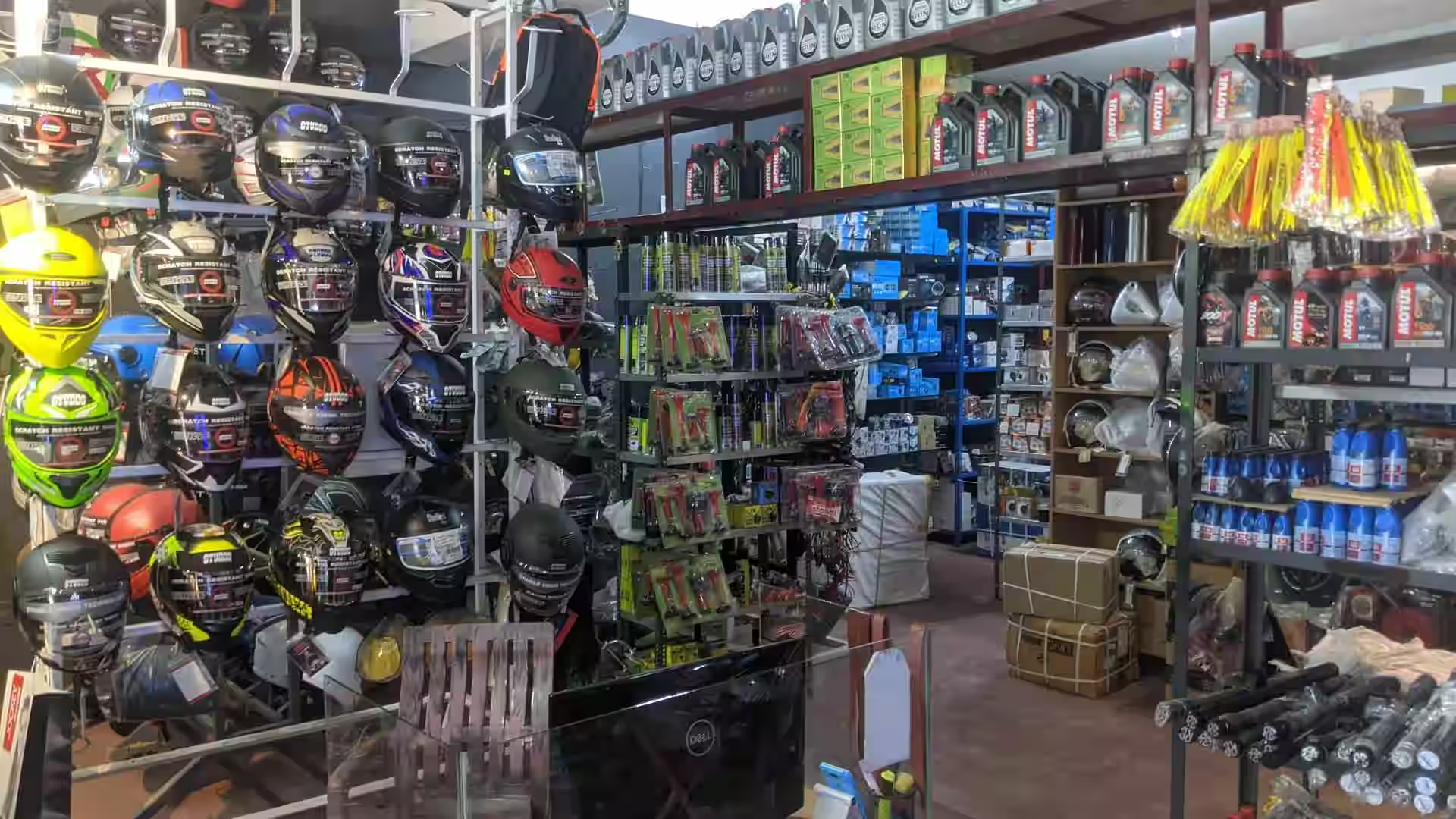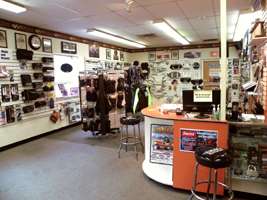Go To Our Motorcycle Shop for Expert Advice and Quality Products
Go To Our Motorcycle Shop for Expert Advice and Quality Products
Blog Article
Comprehending the Important Parts of a Motorcycle: A Comprehensive Overview for Fanatics
For motorcycle lovers seeking to boost their riding experience and ensure their bikes run smoothly, recognizing the crucial elements of a motorbike is vital. Each element, from the engine's detailed functions to the critical function of the stopping devices, not just influences performance but likewise safety and security and convenience. This overview will certainly stroll with the essential parts that every rider need to recognize with, making it possible for notified options in both maintenance and prospective upgrades. As we start this expedition, one must ask: how does each component interact to develop the seamless ride every fanatic looks for?
Engine Elements

The camshaft plays a vital function in managing the timing of the engine's shutoffs, making sure the exact opening and closing required for efficient fuel and air intake, in addition to exhaust expulsion. This timing is important to keeping ideal engine performance and efficiency. Additionally, the carburetor or gas injection system, depending upon the motorcycle version, is in charge of blending air with fuel in the appropriate proportion for combustion.
The cooling system, either air or liquid-based, works to preserve the engine's temperature within operational limits, preventing getting too hot and ensuring durability - motorbike shop. Each element, diligently created and incorporated, adds to the smooth procedure of the engine, defining the motorbike's power result and general performance
Transmission System
Integral to the bike's functionality, the transmission system ensures reliable power transfer from the engine to the wheels. This system comprises numerous vital elements, consisting of the clutch, gearbox, and last drive, each playing an important duty in equating the engine's power into activity. The clutch, commonly operated by a hand lever, offers to disengage the engine and engage from the transmission, enabling smooth equipment changes and regulated acceleration.
The transmission, frequently described as the transmission correct, includes a set of equipments that bikers can manually change via to readjust the bike's speed and torque outcome. These equipments are organized in a sequence that enables the motorcycle to speed up efficiently and maintain optimum engine efficiency throughout various rates. A lot of bikes use a consecutive gearbox, requiring the motorcyclist to shift equipments in a predetermined order.
Braking Devices
While comprehending the transmission system is crucial to utilizing a motorcycle's power, just as crucial is the capacity to control and stop that power successfully, which is where stopping mechanisms come right into play. Brakes are essential for safety and performance, offering the biker with the essential control to browse various terrains and conditions. Usually, motorbikes feature two kinds of stopping systems: disc brakes and drum brakes.
Disc brakes are much more common in modern bikes due to their premium performance. They are composed of a brake disc, caliper, and pads. When turned on, the caliper squeezes the brake pads versus the rotating disc, transforming kinetic energy right into heat, thus slowing down the wheel. This system uses better heat dissipation, constant performance, and enhanced stopping power, particularly go to this website in wet conditions.
On the other hand, drum brakes, though less typical, are still found in some bikes. They work by pressing brake shoes versus the internal surface area of a drum connected to the wheel. While generally less reliable in heat dissipation and stopping power, drum brakes are simpler and much more economical.
Comprehending these stopping systems' subtleties allows bikers to preserve their bikes effectively and value the engineering that guarantees efficient and risk-free quiting.
Suspension and Steering
Suspension and steering systems are vital elements that significantly influence a motorcycle's handling and ride convenience. The suspension system, containing forks at the front and shock absorbers at the back, takes in roadway irregularities, boosting security and control. Front forks, inverted or commonly telescopic, compress and rebound to minimize effects, while rear shock absorbers keep tire contact with the roadway, essential for traction and security.
Steering, focused around the handlebars, connects the rider to the motorbike's directional control. navigate here The guiding head bearings ensure smooth procedure, permitting precise maneuverability. Proper alignment and maintenance of these bearings are critical for foreseeable guiding response and reducing cyclist fatigue.
The suspension's adjustability is another important aspect; preload, damping, and rebound setups allow modification to suit different riding problems and designs. This flexibility is vital for optimizing performance, whether navigating metropolitan roads or dealing with sturdy tracks. Innovations like electronic shock absorber provide real-time modifications, enhancing experience quality across varied surfaces.

Electric Equipments
After guaranteeing a smooth and controlled adventure with reliable suspension and steering systems, interest turns to the electrical systems, a pivotal aspect of modern bikes. These systems play a crucial function not just in beginning the engine however also in powering different elements that boost the capability and safety of the motorbike.
At the heart of a motorbike's electrical system is the battery, which shops electric energy needed for starting the engine and powering complementary systems - motorbike shop. The alternator or generator, combined with the rectifier-regulator, makes certain the battery continues to be charged while the motorcycle functions, transforming mechanical energy right into electrical power and maintaining voltage degrees
The ignition system, another vital part, is in charge of stiring up the air-fuel mixture in the engine's cylinders. Modern motorcycles frequently make use of an electronic ignition why not check here system, using higher effectiveness and integrity compared to conventional systems.
Illumination systems, including headlights, tail lights, and signs, are also important, ensuring exposure and security for the cyclist. Extra electronic components such as sensing units, control devices, and presents contribute to advanced attributes like gas injection monitoring, anti-lock stopping systems (ABS), and electronic control panels, additionally boosting the riding experience.
Verdict
A detailed understanding of a bike's vital elements, including the engine, transmission system, braking systems, suspension, guiding, and electrical systems, is indispensable for fanatics intending to enhance comfort, safety, and performance. Proficiency of these components permits for educated choices regarding maintenance and upgrades, inevitably enhancing the riding experience. By integrating this expertise, cyclists can guarantee their motorcycles run at peak performance and integrity, consequently taking full advantage of both pleasure and long life of their automobiles.
For bike lovers looking to elevate their riding experience and guarantee their bikes run smoothly, comprehending the necessary components of a bike is paramount.Important to the motorbike's capability, the transmission system makes sure reliable power transfer from the engine to the wheels.While recognizing the transmission system is crucial to utilizing a motorcycle's power, similarly important is the capacity to manage and stop that power effectively, which is where stopping devices come right into play. Usually, motorbikes include 2 kinds of stopping systems: disc brakes and drum brakes.
A complete comprehension of a motorcycle's crucial elements, including the engine, transmission system, braking systems, suspension, steering, and electric systems, is indispensable for enthusiasts intending to maximize efficiency, safety and security, and comfort.
Report this page